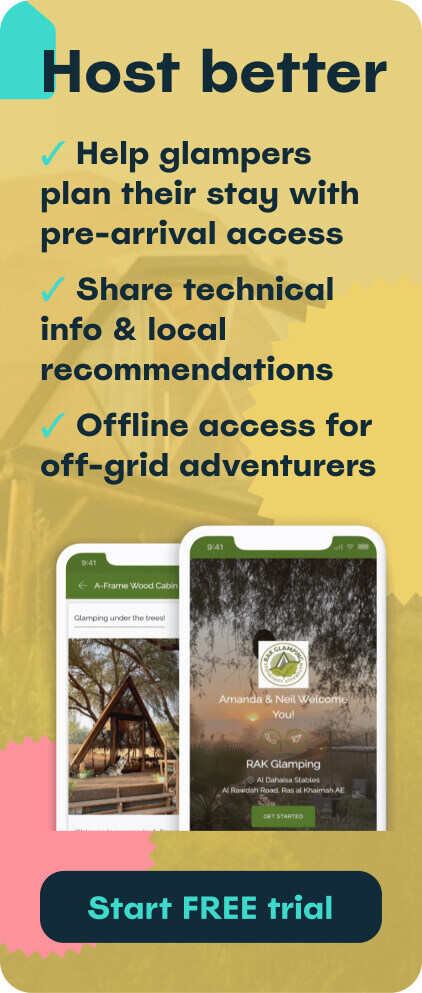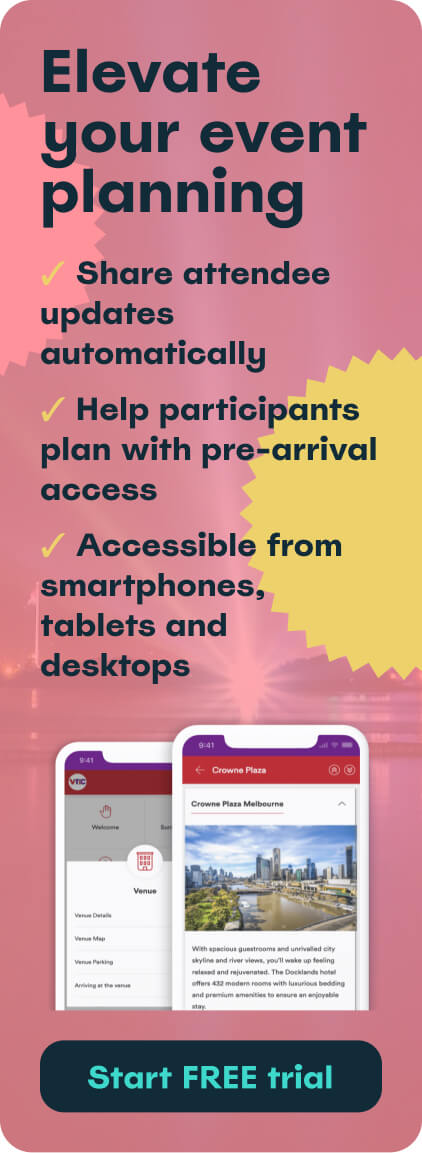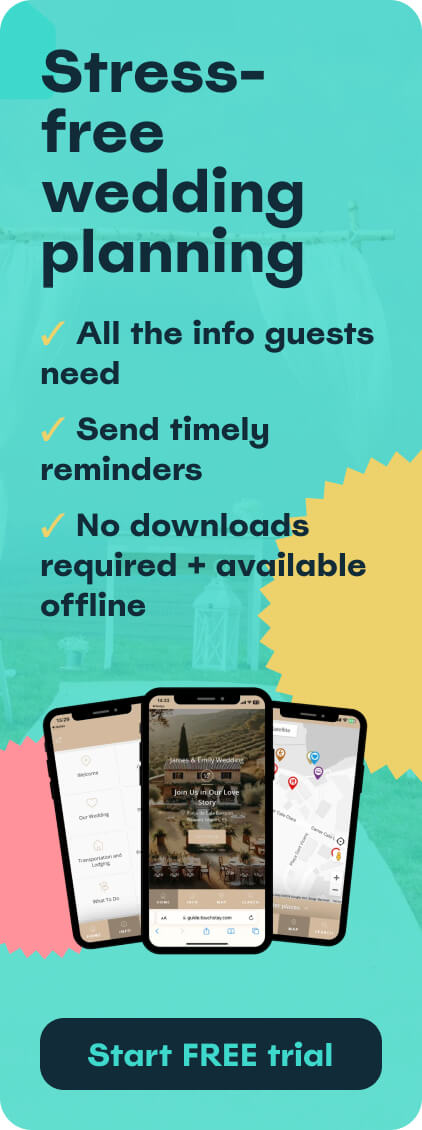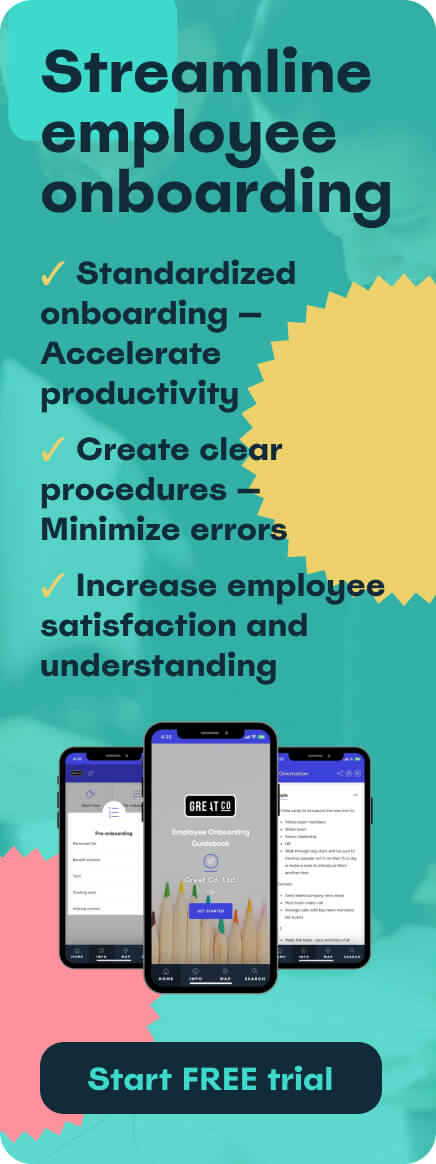Quick answer (TL;DR)
Airbnb occupancy rate is the percentage of available nights your property is booked. It shows how often your listing is earning money and helps you optimise pricing, visibility, and guest experience to increase revenue.
The vacancy rate is calculated using the number of unbooked nights (your vacant days) over the available period.
The formula is:
Occupancy Rate = (Number of booked nights/Number of available nights) x 100
Or, even simpler, because the two rates must add up to 100%:
Vacancy Rate = 100% - Occupancy Rate
The term 'occupancy rate' might sound like dry industry jargon, but for any short-term rental host it's the single most important metric for understanding your property's performance and profitability.
Understanding your Airbnb occupancy rate is a non-negotiable step toward optimising your listing, setting smart pricing, and ultimately, making more money. It's the pulse of your short-term rental business.
This guide to Airbnb occupancy rate will cover:
- What is Airbnb occupancy rate?
- Why is an Airbnb occupancy rate important?
- How to check the Airbnb occupancy rate?
- How to calculate an Airbnb occupancy rate?
- What is considered a good Airbnb occupancy rate?
- How to increase Airbnb occupancy rate?
- Top 10 places with the highest Airbnb occupancy rates
- Final thoughts
- Frequently asked questions
Turn vacant nights into booked stays! A premium guest experience starts with a great guidebook. Reduce guest questions and boost your 5-star reviews to increase bookings.
What is Airbnb occupancy rate?
The Airbnb occupancy rate is the percentage of available days in a given period that your rental property is booked by guests.
It’s a measure of how effectively you are filling the calendar slots that are open for bookings. Unlike a traditional hotel which aims for a high occupancy of its hundreds of rooms, for a short-term rental host, it’s all about the percentage of days your single listing is occupied.
A high occupancy rate suggests strong demand for your property at the price you are charging, while a low rate indicates the need for a change in strategy, perhaps related to pricing, marketing, or the guest experience you provide.
Simple example
Let’s say your property is available to rent for the entire month of June, which has 30 days.
- Booked nights: 24
- Total available nights: 30
Your occupancy rate for June would be 80%
Why is an Airbnb occupancy rate important?
Tracking your occupancy rate is foundational to running a successful, profitable business, as it provides actionable intelligence you can use to refine your approach.
a) Higher occupancy means more income
This is the most direct reason. The more often your property is booked, the more money you're making. A low occupancy rate means your property is sitting empty and costing you money (mortgage, bills, etc.) without generating income.
Every single night that goes unbooked is lost revenue that you can never recover.
Maximising occupancy is the most straightforward route to increasing your gross revenue. However, it’s important to strike a balance, as blindly chasing 100% occupancy can lead to underpricing your unit, which brings us to the next point…
b) Better insights
The occupancy rate gives you a clear snapshot of your listing's appeal. When you track it over time (comparing it week-on-week, month-on-month, or year-on-year) you gain valuable insights.
- Are your summer months hitting 90%? Great, perhaps you could increase your price next summer.
- Are your winter months hovering around 40%? This signals an opportunity to run targeted promotions, adjust your minimum night stay, or focus on attracting mid-week business travellers.
This data moves you from guesswork to a data-driven decision-making process.
c) Analysis of the market demand
Comparing your occupancy rate to others in your area helps you see how much demand there is and whether your listing is keeping up.
If the average occupancy rate in your city is 70% but yours is only 55%, you know you're trailing the market. This should prompt a review of your pricing, photos, listing description and reviews.
Conversely, if you're consistently hitting 95% when the local average is 75%, you're doing exceptionally well, but you might also be leaving money on the table by underpricing.
d) Occupancy vs. revenue insights
While a high occupancy rate is desirable, it’s only truly meaningful when viewed alongside your Average Daily Rate (ADR) and Revenue Per Available Night (RevPAR).
- You could have 100% occupancy, but if your prices are set too low, your revenue will suffer.
- Similarly, you could charge a very high price and only get a few bookings, leading to a low occupancy rate but a decent total revenue.
The most successful hosts aim for the optimal balance: the highest occupancy rate that doesn't require drastic price reductions, thereby maximising your RevPAR.
How to check your Airbnb occupancy rate
Airbnb does not provide a single, universal occupancy rate dashboard number for all hosts. While professional hosts using integrated software can access more granular metrics, for the average host, checking this data requires a few steps.
Step-by-step instructions for hosts
- Log in to your Airbnb host account. Navigate to your main host dashboard.
- Go to the 'Performance' or 'Insights' tab. This is where most of your statistics and metrics live.
- Analyse the 'Calendar' and 'Earnings' data:
- Calendar View: Look at the calendar for the period you are interested in (such as the last 30 days, or a specific season). Visually count the number of booked nights and the number of nights you had available to book.
- Earnings/Revenue Reports: These reports often give you the total number of nights booked for a selected period. You still need to manually determine or calculate the number of nights that were available for booking in that same period (i.e. not blocked out).
- Use third-party tools:
- For the most accurate and competitor-benchmarked data, consider using dedicated short-term rental analytics platforms (like AirDNA or Mashvisor, or the one you may be using for dynamic pricing). These tools integrate with your listing (or analyse publicly available data) to give you an automated, detailed breakdown of your occupancy rate and how you compare to other listings in your neighbourhood.
Pro tip: Maximise your short-term rental revenue with our guide to dynamic pricing.
How to calculate Airbnb occupancy rates
Calculating your occupancy rate is straightforward, provided you use the correct figures. It’s a simple division that gives you the percentage of time your rental is actually making money.
The formula is as follows:
Occupancy Rate = (Booked nightsTotal available nights) 100
Key components:
- Number of booked nights: This is the total number of nights guests stayed at your property during the specific period you are measuring (such as a month, a quarter, or a year).
- Number of available nights: This is the total number of nights your listing was actually set as open and bookable on the calendar. This is not the total number of nights in the period. Crucially, you must exclude any nights you have manually blocked out for personal use, cleaning or maintenance.
Calculation example
Let's calculate the occupancy rate for a full year (365 days).
Scenario:
- Total days in the year: 365
- Days blocked for host use/maintenance: 15 days
- Number of available nights: 365 - 15 = 350 nights
- Number of booked nights: 280 nights
The calculation:
Occupancy Rate = (Booked nightsTotal available nights) 100
Occupancy Rate = (280350) 100 = 80%
In this example, your annual Airbnb occupancy rate is 80%.
This is a solid, measurable result that you can benchmark your future performance against.
What is considered a good Airbnb occupancy rate?
Defining a ‘good’ Airbnb occupancy rate is less about a single universal number and more about context. The ideal rate depends heavily on your location, the type of property, local regulations, and your specific business strategy.
However, based on general industry performance metrics, here is a widely accepted benchmark, particularly in the UK market:
Below average: under 55%
- Under ~ 55% (many UK markets report occupancy rates around 50-60%) suggests significant issues with pricing, listing quality, or marketing.
Average: 55-65%
- A baseline for a typical full-time rental in the UK. This is profitable but indicates room for strategic improvement.
Good: 65-75%
- A strong, healthy rate for a well-managed property. This range often signals smart pricing and a quality guest experience.
Excellent: above 75%
- Achieved by top-performing listings in high-demand, high-footfall areas (like London, Edinburgh or popular tourist spots) that are priced dynamically and expertly marketed.
The importance of market comparison
Crucially, you must compare your rate to the local average.
- If you’re in a major city like London, where the average occupancy rate can be significantly higher (often around 70-75% for full-time listings), a 60% rate might be below par.
- If you’re in a more rural or seasonal area, a 60% annual rate might actually be exceptional, demonstrating strong off-season booking success.
Always use local data (which you can often find via short-term rental data tools) to set a meaningful benchmark for your property.
How to increase Airbnb occupancy rate?
A low occupancy rate is not a problem, it's an opportunity to improve! Increasing your bookings requires a holistic approach that focuses on visibility, pricing and the overall guest experience.
Here are the top tips for boosting your Airbnb occupancy rate:
1. Master dynamic pricing
Your nightly price should almost never be static. Implement a dynamic pricing strategy to adjust your rates based on real-time market demand, local events, day of the week, and seasonality.
Be aggressive with lower prices during off-peak seasons and midweek stays to capture those bookings, then raise them significantly for weekends and major events. Even a slightly lower rate that secures a booking is better than an empty night.
2. Optimise your listing visibility
- Use high-quality, professional photography: pictures are the first, and often the last, thing a guest looks at. Invest in professional photos that showcase the best aspects of your property, with good lighting and clear staging.
Pro tip: check out our guide to Airbnb photography - Refine your title and description: use your main keywords (for example, ‘Luxury apartment near theatre district’) and clearly highlight unique selling points like 'free parking', 'super-fast Wi-Fi', or 'pet-friendly'.
- Turn on Instant Book: this significantly boosts your listing's visibility in search results, as many guests filter for properties that allow instant booking.
3. Enhance the guest experience for better reviews
Positive reviews are the engine of high occupancy. Guests trust other guests. A five-star rating and glowing reviews are the best marketing you can get.
- Focus on communication. Be prompt, friendly, and helpful from the first inquiry to the post-stay follow-up.
- Provide a frictionless stay. This is where a Touch Stay digital guidebook becomes your secret weapon! Guests often ask the same questions: What’s the Wi-Fi code? How do I use the heating? Where’s the nearest supermarket?
A great digital guidebook provides instant, easy answers to all these questions and more, saving you time and drastically improving the guest experience. This leads to happier guests, better reviews and higher occupancy rates.

Boost your occupancy with better guest communication! Start saving time and earning 5-star reviews with a Touch Stay digital guidebook.
4. Adjust your booking settings
- Lower your minimum night stay: review your minimum stay requirements, especially during low season or for single nights that fall between two bookings. Dropping your minimum to one or two nights can help fill those otherwise empty gaps.
- Offer mid-week and extended stay discounts: attract business travellers, digital nomads, or those taking longer holidays with special pricing for stays of five nights or more.
5. Be a 'Superhost' in all but name
Strive for Superhost-level quality even if you haven't officially earned the badge. This means high response rates, low cancellation rates, and exceptional overall ratings. Airbnb rewards these behaviours with better search ranking, which translates directly into higher visibility and a better chance of securing bookings.
Top 10 places with the highest Airbnb occupancy rates
Understanding where in the world the short-term rental market is performing best can provide hosts with a valuable benchmark and inform investment decisions. While global figures can fluctuate due to economic changes and local regulations, certain destinations consistently show high demand.
Here is a look at some of the world's top-performing short-term rental markets by occupancy rate:
| Rank | Country | City / Market example | Estimated average occupancy rate |
|---|---|---|---|
| 1 | Japan | Tokyo | 80% + |
| 2 | United Kingdom | London | 75% + |
| 3 | Mexico | Tulum / Riviera Maya | 70–75% |
| 4 | Portugal | Lisbon | 70% + |
| 5 | United States | Certain coastal / ski resorts | 65–75% |
| 6 | France | Paris | 65–70% |
| 7 | Spain | Barcelona / Canary Islands | 65% + |
| 8 | Iceland | Reykjavik | 65% + |
| 9 | South Africa | Cape Town | 60–70% |
| 10 | Australia | Sydney | 60–65% |
*These figures are based on broad industry reports from 2024-2025 focusing on professional or full-time short-term rental operators. Actual rates vary by neighbourhood, property type and time of year.
It is worth noting the consistent high performance of major European and Asian capitals, demonstrating that high footfall and robust year-round tourism often sustain the highest occupancy figures.
Final thoughts
The Airbnb occupancy rate is a business barometer. It tells you exactly how effectively you are leveraging your most valuable asset: the available time in your rental calendar.
A strong occupancy rate starts with knowing how to calculate it, comparing it with what’s normal in your area, and making smart improvements where they matter most.
Focus on pricing, polish your listing, and give guests a great experience. Those habits shift you from casual hosting into running a high-performing short-term rental business.
Remember that while price and pictures get you the booking, it’s the guest experience that drives those all-important 5-star reviews, leading to better search placement and a consistently higher occupancy rate.
Giving guests everything they need in one place with a Touch Stay digital guidebook is one of the smartest and simplest ways to support and grow this metric.
Ready to take control of your occupancy rate? A better guest experience means more 5-star reviews and more bookings. Start your free Touch Stay trial now and see the difference.
Frequently asked questions
Navigating the world of short-term rental metrics can bring up a few common questions. Here are the answers to some of the most frequently asked questions about occupancy rates.
The global average Airbnb occupancy rate is generally considered to be in the region of 48% to 60% for all listings (including both part-time and full-time rentals). However, this number is heavily skewed by the large number of hosts who only rent out their space occasionally.
For hosts operating their properties as a full-time business, a more realistic and competitive average to aim for is 65% and above. As noted earlier, this figure is highly dependent on your local market. For example, the average rate for full-time listings in many high-demand European capitals often sits comfortably above 70%.
The vacancy rate is the opposite of the occupancy rate. It represents the percentage of time your available property is unbooked or empty.
While the occupancy rate measures success (how full you are), the vacancy rate measures the missed opportunity (how empty you are).
A host will often track both metrics to get a full picture of their property’s performance. If you want to increase your occupancy rate, you are effectively trying to lower your vacancy rate.
The vacancy rate is calculated using the number of unbooked nights (your vacant days) over the available period.
The formula is:
Occupancy Rate = (Number of booked nights/Number of available nights) x 100
Or, even simpler, because the two rates must add up to 100%:
Vacancy Rate = 100% - Occupancy Rate

Ned
Ned has clocked up over 11 years in digital marketing and comms, with a strong focus on creating engaging content for a range of brands and agencies. When he’s not writing, he can be found digging for records, peering through his telescope at the night sky, or onboard his local lifeboat where he volunteers as a crewmember.
Be the first to know!
Join our newsletter for early access to:
- ✅ Free guides
- ✅ Pro tips & tricks
- ✅ Time saving tutorials
- ✅ Latest blog posts
- ✅ Checklists & templates














